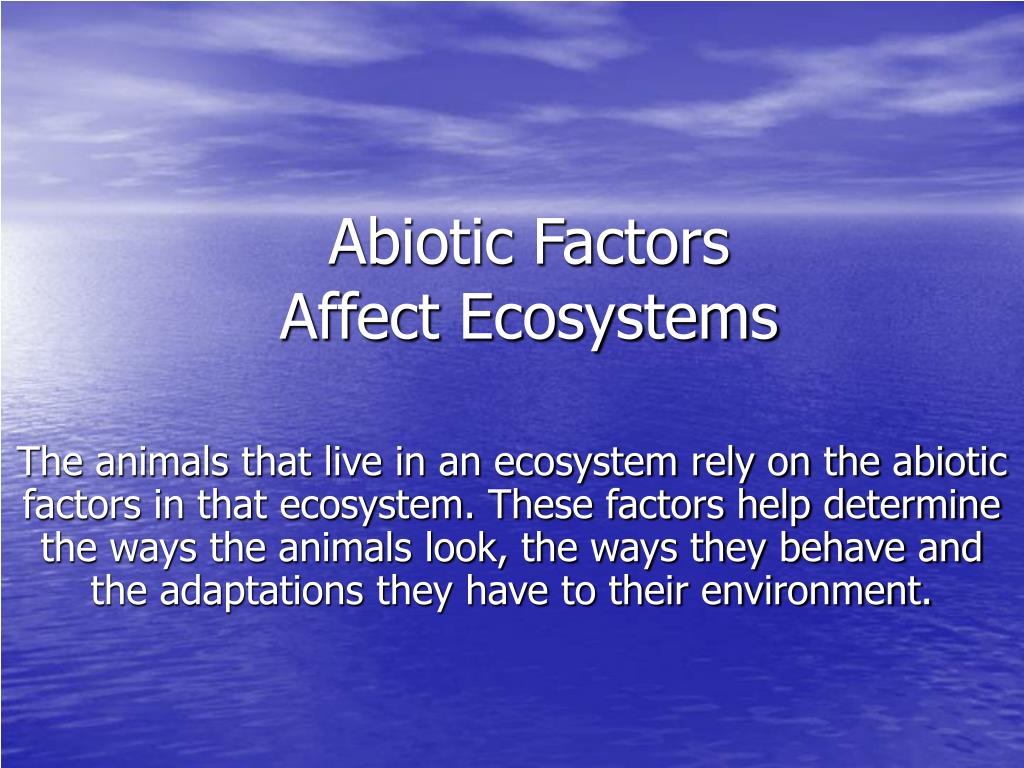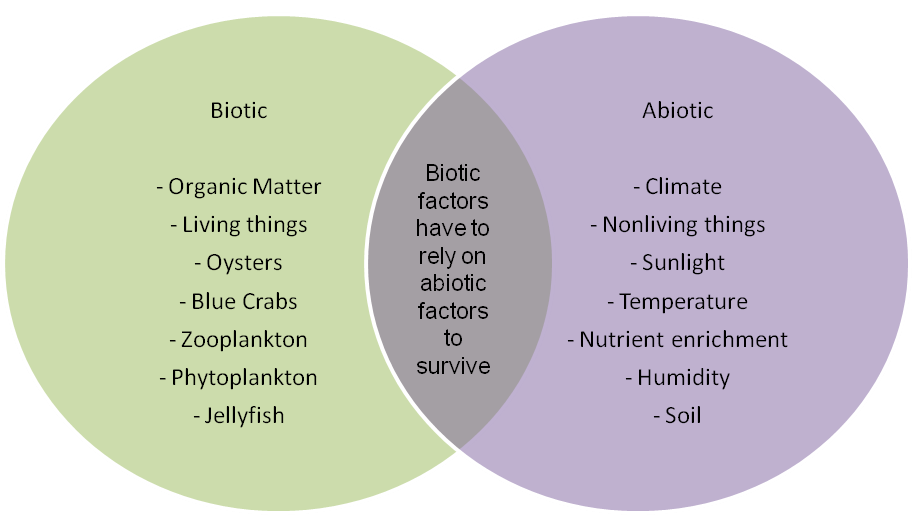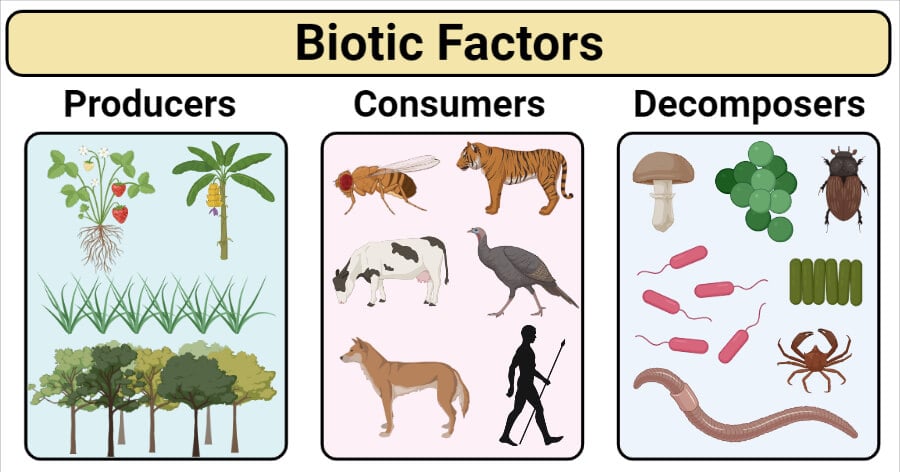Topic how do abiotic factors affect the ecosystem: Discover how abiotic factors shape our ecosystems, influencing biodiversity and sustainability in profound ways, from climate to water resources.
Table of Content
- How do abiotic factors affect the ecosystem?
- Understanding Abiotic and Biotic Factors in Ecosystems
- Major Abiotic Factors Influencing Ecosystems: Temperature, Water, and Light
- The Role of Water in Ecosystem Dynamics: Availability and Quality
- Oxygen"s Essential Role in Supporting Life and Metabolic Processes
- Temperature"s Impact on Organism Survival and Distribution
- Wind and Its Effects on Ecosystem Structure and Function
- YOUTUBE: The Impact of Abiotic Factors on Ecosystems
- Sunlight as the Primary Energy Source for Photosynthesis
- How Soil Composition and pH Influence Ecosystem Health
- The Significance of Salinity and Its Effect on Aquatic Ecosystems
- Human Activities and Their Impact on Abiotic Factors
- Adaptations of Organisms to Abiotic Stress
How do abiotic factors affect the ecosystem?
Abiotic factors are non-living components of an ecosystem that have a significant impact on its overall functioning. These factors can include various physical and chemical elements such as temperature, sunlight, water availability, soil composition, air quality, and natural disasters.
The effects of abiotic factors on an ecosystem can be summarized as follows:
- Temperature: Temperature plays a crucial role in determining the types of organisms that can survive and thrive in an ecosystem. Extreme temperatures can limit the growth and reproduction of certain species, while more moderate temperatures may promote a diverse range of organisms.
- Light: Sunlight is essential for photosynthesis, the process by which plants convert sunlight into energy. The amount and intensity of light in an ecosystem influence the growth of plants and the productivity of the entire food chain. Light availability can also impact the behavior, reproduction, and migration patterns of various organisms.
- Water: Water availability is critically important for the survival of all organisms. It affects the distribution of organisms within an ecosystem and determines the types of species that can thrive in a particular habitat. Changes in water levels, such as floods or droughts, can have far-reaching consequences on the ecosystem\'s biodiversity and productivity.
- Soil Composition: The composition of soil, including its nutrient content and pH level, affects the types of plants that can grow in an area. Different plant species support different animal species, so alterations in soil composition can impact the entire food web within an ecosystem.
- Air Quality: Air quality, including levels of oxygen, carbon dioxide, and pollutants, can directly affect the respiratory systems of organisms, particularly those that rely on gaseous exchange. Pollution and poor air quality can harm or even kill certain species, leading to a disruption of ecosystem dynamics.
- Natural Disasters: Natural disasters such as hurricanes, earthquakes, wildfires, and floods can have catastrophic effects on ecosystems. They can lead to the destruction of habitats, loss of species, and long-term alterations in the structure and functioning of an ecosystem.
In summary, abiotic factors play a vital role in shaping and influencing ecosystems. Changes in these factors can lead to shifts in species composition, population dynamics, and overall ecosystem stability. Understanding and monitoring abiotic factors are crucial for conserving and managing ecosystems effectively.
READ MORE:
Understanding Abiotic and Biotic Factors in Ecosystems
Abiotic and biotic factors are the cornerstone of ecosystems, each playing a pivotal role in shaping the environment and the interactions within it. Abiotic factors, the non-living elements like temperature, water, sunlight, and soil, provide the basic conditions for life. In contrast, biotic factors include all living organisms, from plants and animals to fungi and bacteria, interacting within their habitat.
- Temperature: Influences metabolic rates of organisms and determines the geographical distribution of species.
- Water: Essential for life, affecting species survival based on its availability and quality.
- Sunlight: Drives photosynthesis, supporting plant life that forms the base of the food chain.
- Soil Composition: Affects the types of plants that can grow, influencing the entire ecosystem structure.
Together, these abiotic factors set the stage for the complex web of life, the biotic factors, to interact and thrive. Understanding the dynamic interplay between abiotic and biotic components is crucial for conserving biodiversity and managing natural resources effectively.

Major Abiotic Factors Influencing Ecosystems: Temperature, Water, and Light
Abiotic and biotic factors are the cornerstone of ecosystems, each playing a pivotal role in shaping the environment and the interactions within it. Abiotic factors, the non-living elements like temperature, water, sunlight, and soil, provide the basic conditions for life. In contrast, biotic factors include all living organisms, from plants and animals to fungi and bacteria, interacting within their habitat.
- Temperature: Influences metabolic rates of organisms and determines the geographical distribution of species.
- Water: Essential for life, affecting species survival based on its availability and quality.
- Sunlight: Drives photosynthesis, supporting plant life that forms the base of the food chain.
- Soil Composition: Affects the types of plants that can grow, influencing the entire ecosystem structure.
Together, these abiotic factors set the stage for the complex web of life, the biotic factors, to interact and thrive. Understanding the dynamic interplay between abiotic and biotic components is crucial for conserving biodiversity and managing natural resources effectively.
The Role of Water in Ecosystem Dynamics: Availability and Quality
Abiotic and biotic factors are the cornerstone of ecosystems, each playing a pivotal role in shaping the environment and the interactions within it. Abiotic factors, the non-living elements like temperature, water, sunlight, and soil, provide the basic conditions for life. In contrast, biotic factors include all living organisms, from plants and animals to fungi and bacteria, interacting within their habitat.
- Temperature: Influences metabolic rates of organisms and determines the geographical distribution of species.
- Water: Essential for life, affecting species survival based on its availability and quality.
- Sunlight: Drives photosynthesis, supporting plant life that forms the base of the food chain.
- Soil Composition: Affects the types of plants that can grow, influencing the entire ecosystem structure.
Together, these abiotic factors set the stage for the complex web of life, the biotic factors, to interact and thrive. Understanding the dynamic interplay between abiotic and biotic components is crucial for conserving biodiversity and managing natural resources effectively.

Oxygen"s Essential Role in Supporting Life and Metabolic Processes
Oxygen is a critical abiotic factor that supports life and complex metabolic processes across various ecosystems. Its presence in the atmosphere and water is essential for the survival of most organisms on Earth.
- Supports Cellular Respiration: Oxygen is vital for cellular respiration in aerobic organisms, enabling them to convert food into energy.
- Drives Ecosystem Productivity: In aquatic ecosystems, oxygen levels influence water quality and the health of fish and plant populations.
- Regulates Metabolic Rates: The availability of oxygen can affect the metabolic rates of organisms, influencing their growth, reproduction, and survival.
- Impacts Photosynthesis: Although oxygen is a by-product of photosynthesis, its balanced concentration is crucial for maintaining the efficiency of this process in plants.
Changes in oxygen levels, due to factors such as pollution or climate change, can significantly impact ecosystem health, highlighting the interconnectedness of abiotic factors and living organisms within ecosystems.
Temperature"s Impact on Organism Survival and Distribution
Temperature is a fundamental abiotic factor that significantly influences the survival, behavior, and distribution of organisms across ecosystems. It affects biological processes and ecosystem dynamics globally.
- Regulates Biological Processes: Temperature directly affects metabolic rates in organisms, with warmer temperatures typically increasing metabolic activity.
- Determines Habitat Suitability: Different species have specific temperature ranges for optimal growth, reproduction, and survival, defining their geographic distribution.
- Influences Migration Patterns: Seasonal changes in temperature can trigger migration, as species move to areas with more favorable conditions.
- Affects Species Interactions: Temperature shifts can alter the timing of breeding, feeding, and other ecological interactions, potentially disrupting established food webs.
Climate change is modifying temperature profiles globally, leading to shifts in species distributions and potentially threatening biodiversity. Understanding the role of temperature in ecosystems is crucial for conservation efforts and predicting future changes in biodiversity patterns.

Wind and Its Effects on Ecosystem Structure and Function
Wind plays a crucial role in shaping ecosystems, influencing their structure, function, and the distribution of life within them. It acts as a powerful abiotic factor with both direct and indirect effects on living organisms and their habitats.
- Pollination and Seed Dispersal: Wind aids in the pollination of many plant species and the dispersal of seeds, facilitating the reproduction of flora and the spread of vegetation across landscapes.
- Microclimate Regulation: By influencing evaporation and transpiration rates, wind can affect the microclimate of an area, impacting the water balance and temperature regulation within ecosystems.
- Soil Formation and Erosion: Wind contributes to soil formation by transporting and depositing minerals but can also cause soil erosion, affecting plant life and agricultural practices.
- Shaping Plant Growth: Persistent winds can lead to physical adaptations in plants, such as the development of stronger stems or a more aerodynamic shape, a phenomenon known as wind pruning.
The impact of wind extends beyond physical changes, influencing ecological interactions and energy flows within ecosystems. By understanding wind"s role, we can better appreciate the dynamic balance of nature and the interconnectedness of abiotic and biotic factors.
The Impact of Abiotic Factors on Ecosystems
\"Discover the fascinating world of abiotic factors and their impact on our environment in this captivating video. Learn how factors like temperature, sunlight, and soil composition shape ecosystems, and gain a deeper understanding of the delicate balance that sustains life on our planet.\"
Understanding Biotic and Abiotic Factors in Ecosystems
\"Embark on a mesmerizing journey through diverse ecosystems in this breathtaking video. Witness the intricate web of life as we explore vibrant rainforests, serene oceans, and expansive grasslands. Dive into the wonders of nature and gain a deeper appreciation for the interconnectedness of all living organisms.\"
Sunlight as the Primary Energy Source for Photosynthesis
Sunlight is indispensable for the photosynthesis process, serving as the primary energy source that drives this fundamental biochemical reaction. Through photosynthesis, plants, algae, and some bacteria convert light energy into chemical energy, producing oxygen and glucose, essential for life on Earth.
- Energy Conversion: Chlorophyll within the chloroplasts captures sunlight, facilitating the conversion of carbon dioxide and water into glucose and oxygen.
- Supports Food Webs: The glucose produced through photosynthesis serves as the primary energy source for plants and, by extension, all organisms in the ecosystem that consume plants.
- Oxygen Production: Photosynthesis is a key source of atmospheric oxygen, critical for the respiration of most living organisms.
- Regulates Climate: By absorbing carbon dioxide, a greenhouse gas, photosynthesis helps regulate Earth"s climate, mitigating global warming.
The availability of sunlight influences plant growth, ecosystem productivity, and biodiversity. Seasonal and geographical variations in sunlight availability lead to different biomes and ecosystems across the globe, each with unique flora and fauna adapted to local conditions.

How Soil Composition and pH Influence Ecosystem Health
Soil composition and pH level are critical abiotic factors that significantly impact the health and functionality of ecosystems. These soil characteristics determine the types of plants that can grow, which in turn affects the animals that rely on those plants for food and habitat.
- Soil Composition: The mix of organic matter, minerals, gases, liquids, and organisms that together support life. Soil composition affects water retention, nutrient availability, and root penetration, which are essential for plant growth.
- pH Level: Measures the acidity or alkalinity of the soil, which can influence the solubility of nutrients. Different plants require different pH levels to absorb the necessary nutrients effectively. Extreme pH levels can limit plant growth and affect the biodiversity within an ecosystem.
- Nutrient Availability: Soil pH affects the availability of essential nutrients such as nitrogen, phosphorus, and potassium. Certain microorganisms that benefit plant growth also thrive best within specific pH ranges.
- Soil Organisms: The health of the soil ecosystem, including beneficial bacteria and fungi, earthworms, and other decomposers, is influenced by soil composition and pH. These organisms are vital for nutrient cycling and organic matter decomposition.
Managing soil health is crucial for agriculture, conservation, and ecosystem sustainability. By understanding how soil composition and pH influence ecosystem health, efforts can be made to protect and restore soil quality, supporting biodiversity and enhancing ecosystem services.
The Significance of Salinity and Its Effect on Aquatic Ecosystems
Salinity, or the saltiness of water, is a critical abiotic factor that influences the biodiversity, distribution, and health of aquatic ecosystems. It plays a key role in determining the types of organisms that can thrive in different aquatic environments, from freshwater rivers and lakes to saline oceans and estuaries.
- Water Salinity Levels: Vary across different ecosystems, affecting the osmotic balance critical for aquatic organisms. Species have adapted to survive in specific salinity ranges, and changes can stress or endanger them.
- Estuarine Ecosystems: Where freshwater meets saltwater, salinity gradients create unique habitats supporting diverse species adapted to varying salinity levels.
- Marine Life Adaptations: Marine organisms have evolved physiological mechanisms to deal with saltwater, from regulating salt concentrations to osmoregulation.
- Impact on Biodiversity: Changes in salinity, due to natural processes or human activities, can significantly affect species composition and ecosystem health. For example, increased salinity from road runoff or irrigation can harm freshwater habitats.
Understanding the effects of salinity on aquatic ecosystems is crucial for conservation efforts, as it affects not only the species directly but also the broader ecological dynamics, including food webs and nutrient cycling.
Human Activities and Their Impact on Abiotic Factors
Human activities have profound impacts on abiotic factors within ecosystems, shaping the physical environment and influencing the conditions in which organisms live. While some effects can be negative, there are also positive steps that communities can take to mitigate damage and promote the health of their local ecosystems. Understanding these impacts is crucial for developing sustainable practices and conservation strategies.
- Land Use Changes: Urbanization, deforestation, and agriculture alter the landscape, affecting soil composition, water cycles, and local climates. Responsible land management and reforestation projects can help preserve soil health, enhance water retention, and maintain local climate conditions.
- Water Usage: Overdrawing of water for agricultural, industrial, and domestic use affects the availability of water for ecosystems. Implementing water-saving technologies and practices can reduce the strain on water resources, ensuring enough supply for both human needs and ecosystem support.
- Pollution: The release of pollutants into the air, water, and soil can drastically alter abiotic conditions. Efforts to reduce emissions, improve waste management, and remediate polluted sites are vital for restoring the balance of abiotic factors.
- Climate Change: Emissions of greenhouse gases from human activities contribute to global warming, affecting weather patterns, ocean acidification, and sea levels. Adopting renewable energy sources and reducing carbon footprints can mitigate these effects on ecosystems.
- Chemical Use: The application of pesticides, herbicides, and fertilizers introduces foreign chemicals into ecosystems, affecting soil and water quality. Promoting organic farming and reducing chemical use can help maintain the natural balance of abiotic factors.
By understanding the connection between human activities and abiotic factors, we can take steps to protect and enhance our ecosystems. This involves adopting sustainable practices, investing in environmental protection, and raising awareness about the importance of abiotic factors in supporting life on Earth.
READ MORE:
Adaptations of Organisms to Abiotic Stress
Organisms across ecosystems have developed remarkable adaptations to survive and thrive under various abiotic stresses such as extreme temperatures, water scarcity, high salinity, and intense sunlight. These adaptations are crucial for their survival, reproduction, and the overall balance of the ecosystem.
- Thermal Adaptations: Species living in extreme temperatures have evolved insulating features like thick fur or feathers in cold climates, and reflective surfaces or behaviors such as nocturnal activity patterns in hot environments to manage heat stress.
- Water Conservation: In arid regions, plants like cacti have thickened stems for water storage and reduced leaf surface area to minimize water loss, while animals may produce highly concentrated urine or possess specialized structures to minimize water loss.
- Salinity Tolerance: Organisms in saline environments such as mangroves and salt marsh plants excrete excess salt through specialized leaves or roots, while some fish and invertebrates regulate internal salt concentrations through osmoregulation.
- High Light Adaptations: Plants in environments with intense sunlight often have waxy leaf surfaces or oriented leaf angles to reduce exposure, while some have developed the ability to absorb light across a wider spectrum for efficient photosynthesis.
- Soil and pH Adaptations: Certain plants are adapted to grow in specific soil types and pH levels, employing root modifications, symbiotic relationships, or specialized enzymes to access or tolerate these conditions.
- Wind Resistance: Plants and trees in windy areas may grow closer to the ground, have flexible stems to bend without breaking, or develop strong root systems for stabilization.
These adaptations not only demonstrate the resilience of life in the face of abiotic challenges but also underscore the interconnectedness of all living organisms within their ecosystems. Through understanding and protecting these adaptations, we can ensure the sustainability and health of our planet"s diverse ecosystems.
In exploring the dynamic interplay between abiotic factors and ecosystems, we uncover the intricate balance that sustains life on Earth. This journey through the roles of temperature, water, light, and more, not only enlightens us about the natural world but also emphasizes the importance of preserving these fundamental elements for future generations.










